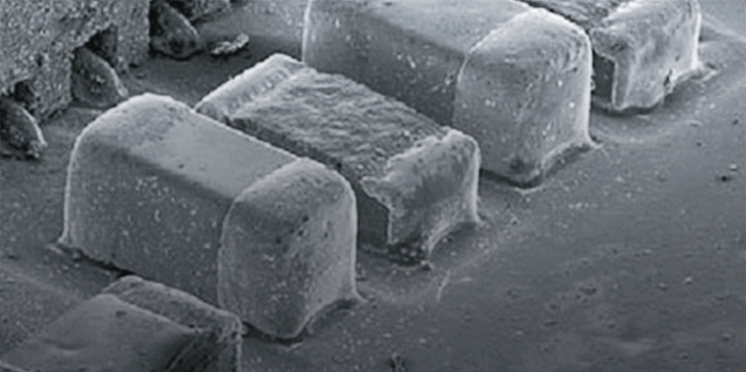wavelength-dispersive X-ray spectroscopy, WDS
wavelength-dispersive X-ray spectroscopy
Wavelength-dispersive X-ray spectroscopy (WDS) is an element analysis method. Characteristic X-rays generated from a specimen are measured using Bragg reflections of X-rays with analyzing crystals, based on the diffraction angles of the reflected X-rays caused by the analyzing crystals. The analyzing power of light elements surpasses EDS. That is, WDS can analyze elements from boron (B) on down. However, the detection efficiency of WDS is lower than EDS. Thus, the illumination current of the electron beam for WDS needs to be set larger than that for EDS (several nA to several 100 nA). As a result, care must be taken for the beam damage to the specimen to suppress the damage. Normally, the resolution of WDS is about 10 eV. Its quantification accuracy is 0.1 to 0.2%. Recently, a high energy-resolution (exceeding 1 eV) analyzer that uses a grating has been developed. Due to its superbly high resolution, this analyzer can be used for analyzing the density of states of the valence band. "WDX" is also used as the abbreviation of wavelength-dispersive X-ray spectroscopy.
Related Term(s)
Term(s) with "wavelength-dispersive X-ray spectroscopy" in the description
Are you a medical professional or personnel engaged in medical care?
No
Please be reminded that these pages are not intended to provide the general public with information about the products.




